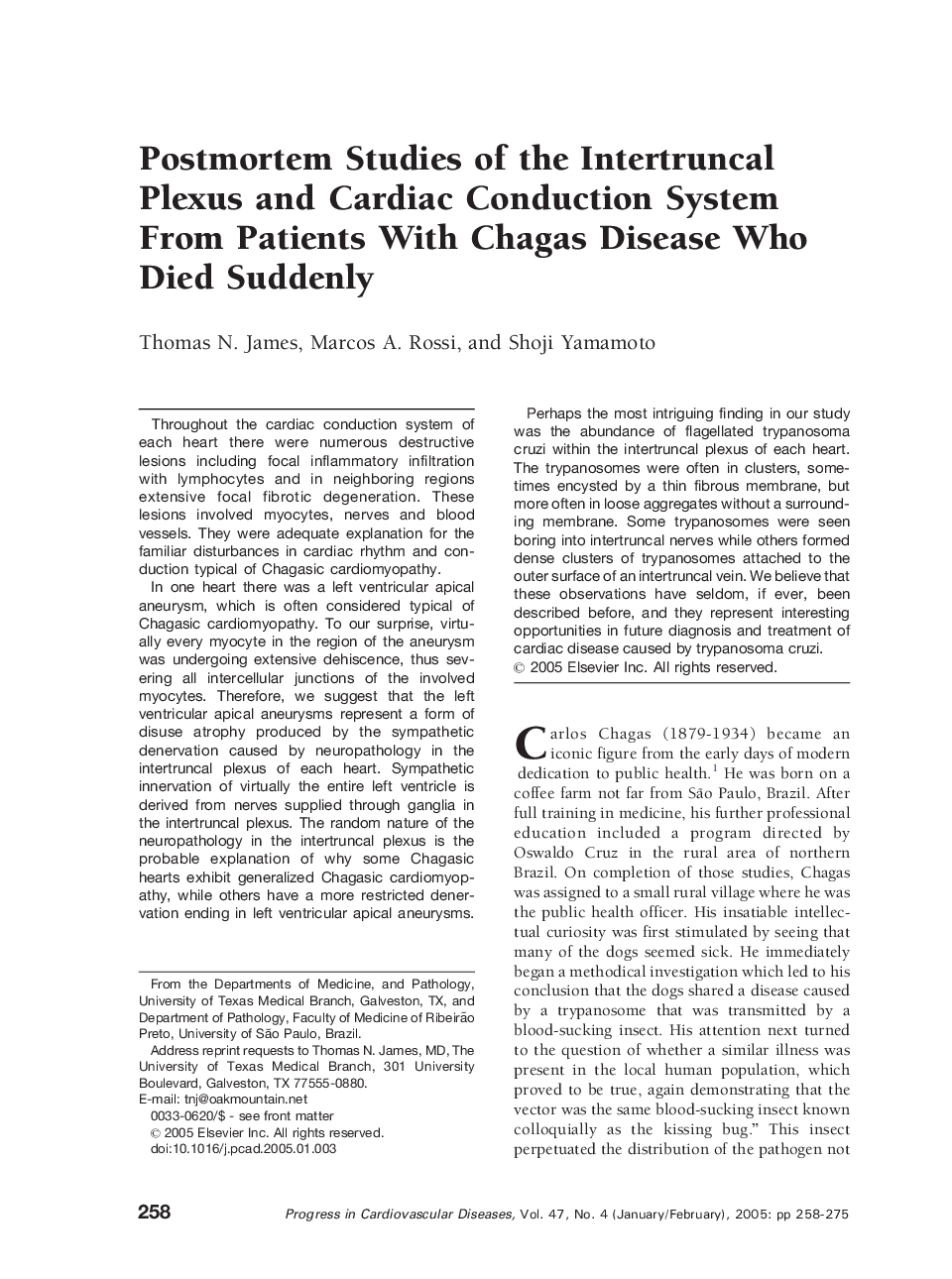| Article ID | Journal | Published Year | Pages | File Type |
|---|---|---|---|---|
| 9179067 | Progress in Cardiovascular Diseases | 2005 | 18 Pages |
Abstract
In one heart there was a left ventricular apical aneurysm, which is often considered typical of Chagasic cardiomyopathy. To our surprise, virtually every myocyte in the region of the aneurysm was undergoing extensive dehiscence, thus severing all intercellular junctions of the involved myocytes. Therefore, we suggest that the left ventricular apical aneurysms represent a form of disuse atrophy produced by the sympathetic denervation caused by neuropathology in the intertruncal plexus of each heart. Sympathetic innervation of virtually the entire left ventricle is derived from nerves supplied through ganglia in the intertruncal plexus. The random nature of the neuropathology in the intertruncal plexus is the probable explanation of why some Chagasic hearts exhibit generalized Chagasic cardiomyopathy, while others have a more restricted denervation ending in left ventricular apical aneurysms. Perhaps the most intriguing finding in our study was the abundance of flagellated trypanosoma cruzi within the intertruncal plexus of each heart. The trypanosomes were often in clusters, sometimes encysted by a thin fibrous membrane, but more often in loose aggregates without a surrounding membrane. Some trypanosomes were seen boring into intertruncal nerves while others formed dense clusters of trypanosomes attached to the outer surface of an intertruncal vein. We believe that these observations have seldom, if ever, been described before, and they represent interesting opportunities in future diagnosis and treatment of cardiac disease caused by trypanosoma cruzi.
Related Topics
Health Sciences
Medicine and Dentistry
Cardiology and Cardiovascular Medicine
Authors
Thomas N. James, Marcos A. Rossi, Shoji Yamamoto,
